#ore ion
Text
Sirius: have you guys ever attend a family dinner party just so you can start drama and it'll end with everyone at each other's throats.
Regulus: you did that last week and Bella ended up stabbing mother's hand and someone ripped out a chunk of father's hair.
Sirius: I should get Bella a gift for that.... Do you think Bella would like a dagger?
Very concerned James: ...what the fuck-
#very tired Remus: well we chose them#Sirius loves making drama#Regulus is tired but he also enjoys it#james is slightly traumatized#remus is so done#they all love each other tho#sirius black#regulus black#james potter#remus lupin#jegulus#wolfstar#the black brothers#marauders#bellatrix black#the black family#the Black family madness#wally burga#ore ion#ao3
680 notes
·
View notes
Text
WIP Wednesday
(@ 2-3 am like is considered good for me....)
And wow, I mostly hit where I wanted to with this. A little more before a fade-to-black but mostly there. And again this section was giving me major issues.
“Morgana, why don’t you head over to Futaba’s for the night?” Akira suggested as he typed into his phone.
“Sure,” the not-cat agreed unthinkingly while grooming his fur. “Wait…” He stopped to look at Akira. A look as close to disgust that can happen on Morgana’s real world face grew as he grumbled, “ick, we’ve been back less than 7 hours.”
“No idea what our plan is for tonight, so…” Akira ended his statement with a bit of a shrug.
Morgana flicked his tail in agitation. “And I sure don’t want to know.”
“You don’t say.”
Akira undid the latch of the window before shifting to slide it open. When the window opened something small flew in. A squeak was made outside as Akira ducked and caught the object. Piercing grey met dusty brown.
“Uh, hi.” Nervous smile met with a grin, before both grew larger. Yuuki slipped into a seat on the retaining wall. His smile dimmed a little as he asked, “I… I didn’t hit you, right?”
“Ugg, seriously? No, you didn’t!” Morgana groused from his spot just below Akira in the window.
“Oh, hey Morgana. Want some help out?” Yuuki asked as he lifted his left arm out.
Morgana lept on to Yuuki’s arm with little hesitation, but used his claws to balance a bit more evenly on the boy as he crossed his shoulders. The cat then swiftly jumped from his perch on the boy.
“See you love-birds tomorrow.” He paused when he called back over his shoulder as he started towards the Sakura home.
“Sure, Morgana,” Yuuki more hesitantly agreed. He quickly followed it up with a “Futaba said her window will be open.”
The cat-like figure just twitched his tail in acknowledgement before wandering out of sight.
The higher boy had at some point began leaning over the ledge, hand supporting his cheek. “So how’d you get there?”
“Uh… I walked the wall back?”
“That’s a tight squeeze. Pebbles?” Akira held up the small stone.
“I saw them in a thing about romantic movies recently…” Yuuki’s blush further filled his face.
“Really?”
“Yeah… Am I good to come in?”
“So Romeo, you coming through the window?”
“Yes?” Yuuki looked honestly confused at the question.
Akira laughed and shook his head before explaining, “That’s fine this time but people sized things to come through the front door. If only because that’s what Sojiro would like.”
“I’ll, uh, keep that in mind.” The wall sitting boy embarrassedly looked away to look towards the cafe’s front entrance.
While he stood up, Yuuki took the time to measure the distance of the jump, no expression besides determination. Akira, as he watched his boyfriend backed away a little on the wall, had sudden concern wash over him even as he moved to give Yuuki space to jump to. The concerned bubbled up slowly until he started to ask, “Are you sure-”
“Yeah!” He swiftly took a half step forward before jumping and grabbing the side of the window. He pulled himself up and smiled into Akira’s face as he lifted himself in. “Would have been so much easier in the Metaverse though.”
Akira’s face didn’t break the worried face even as the other boy started to move more into the room. “Hey?” Yuuki attempted to gain his boyfriend’s actual attention back as he brought his hand to the taller boy’s cheek. “Akira, I play volleyball and Sumire likes to have me help with gymnastic things sometimes. I know my limits, especially here in the real world. If I didn’t think I could make it I wouldn't have done it.” While the worry was draining as he explained, It wasn’t as fast as Yuuki knew Akira could bound back. So the athlete tried a joke: “Didn’t even try to showboat like you sometimes do.”
#wip wednesday#p5#mishima yuuki#amamiya akira#morgana#shuyuu#royal strikers#3/?#short tag list this time#and I know you all arent seeing a bunch of things between what I posted last week and this since I want to explore how I want to do it late#aka text messages#because I write a lot of those long-term apparently#Ive got one more section before I am just straight uploading week to week with little editing/new writing between due to me skipping around#for a little bit at least#assuming I dont add things either#day 2 is short for example and only has one section I need to debate if I add pacing things to it#day 3 has dialogue pretty much done but descript(ions/ors) are pretty barren sadly#but by the time we get there should be better
1 note
·
View note
Text
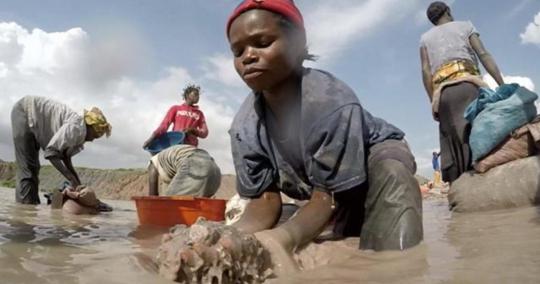
Children still mining cobalt for gadget batteries in Congo
A CBS News investigation of child labor in cobalt mines in the Democratic Republic of Congo has revealed that tens of thousands of children are growing up without a childhood today – two years after a damning Amnesty report about human rights abuses in the cobalt trade was published. The Amnesty report first revealed that cobalt mined by children was ending up in products from prominent tech companies including Apple, Microsoft, Tesla and Samsung.
There's such sensitivity around cobalt mining in the DRC that a CBS News team traveling there recently was stopped every few hundred feet while moving along dirt roads and seeing children digging for cobalt. From as young as 4 years old, children can pick cobalt out of a pile, and even those too young to work spend much of the day breathing in toxic fumes.
What's life like for kids mining cobalt for our gadgets?
So, what exactly is cobalt, and what are the health risks for those who work in the DRC's cobalt mining industry?
What is cobalt?
Cobalt – a naturally occurring element – is a critical component in lithium-ion, rechargeable batteries. In recent years, the growing global market for portable electronic devices and rechargeable batteries has fueled demand for its extraction, Amnesty said in its 2016 report. In fact, many top electronic and electric vehicle companies need cobalt to help power their products.
The element is found in other products as well.
"Cobalt-containing products include corrosion and heat-resistant alloys, hard metal (cobalt-tungsten-carbide alloy), magnets, grinding and cutting tools, pigments, paints, colored glass, surgical implants, catalysts, batteries, and cobalt-coated metal (from electroplating)," says the U.S. Centers for Disease Control and Prevention.
More than half of the world's supply of cobalt comes from the DRC, and 20 percent of that is mined by hand, according to Darton Commodities Ltd., a London-based research company that specializes in cobalt.
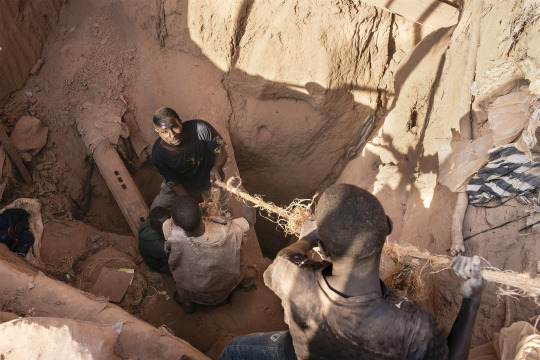
Health risks of chronic exposure
According to the CDC, "chronic exposure to cobalt-containing hard metal (dust or fume) can result in a serious lung disease called 'hard metal lung disease'" – a kind of pneumoconiosis, meaning a lung disease caused by inhaling dust particles. Inhalation of cobalt particles can cause respiratory sensitization, asthma, decreased pulmonary function and shortness of breath, the CDC says.
The health agency says skin contact is also a significant health concern "because dermal exposures to hard metal and cobalt salts can result in significant systemic uptake."
"Sustained exposures can cause skin sensitization, which may result in eruptions of contact dermatitis," a red, itchy skin rash, the CDC says.
Despite the health risks, researchers with Amnesty International found that most cobalt miners in Congo lack basic protective equipment like face masks, work clothing and gloves. Many of the miners the organization spoke with for its 2016 report – 90 people in total who work, or worked, in the mines – complained of frequent coughing or lung problems. Cobalt mining's dangerous impact on workers and the environment
Some women complained about the physical nature of the work, with one describing hauling 110-pound sacks of cobalt ore. "We all have problems with our lungs, and pain all over our bodies," the woman said, according to Amnesty.
Moreover, miners said unsupported mining tunnels frequently give way, and that accidents are common.
Miners know their work is dangerous, Todd C. Frankel wrote late last month in The Washington Post.
"But what's less understood are the environmental health risks posed by the extensive mining," he reported. "Southern Congo holds not only vast deposits of cobalt and copper but also uranium. Scientists have recorded alarming radioactivity levels in some mining regions. Mining waste often pollutes rivers and drinking water. The dust from the pulverized rock is known to cause breathing problems. The mining industry's toxic fallout is only now being studied by researchers, mostly in Lubumbashi, the country's mining capital."

"These job are really desired"
Despite the dangers and risks of working as miners in the cobalt industry, at least of the some miners in the Congo "love their jobs," according to Frankel.
"When I talked to the miners there, none of them want to lose their jobs or give up their jobs. They love their jobs," Frankel said Tuesday, speaking on CBSN. "In a country like Congo, mining is one of the few decently paying jobs to be had there, and so they want to hold onto these jobs."
They also want fair treatment, decent pay, and some safety, "and they would love for their kids to not work in the mines," he said.
"It's a poverty problem," Frankel said. "These parents I talked to – they don't want their kids working in these mines. The problem is that their school fees – schools cost money, and you know, food costs money, and they sort of need their kids to work in there."
Poverty also drives children into the mines instead of school – an estimated 40,000 of them work in brutal conditions starting at very young ages.
The thousands of miners who work in tunnels searching for cobalt in the country "do it because they live in one of the poorest countries in the world, and cobalt is valuable," Frankel wrote in the Washington Post article.
"Not doing enough"
CBS News spoke with some of the companies that use cobalt in their lithium-ion batteries. All of the companies acknowledged problems with the supply chain, but said they require suppliers to follow responsible sourcing guidelines. Apple, an industry leader in the fight for responsible sourcing, said walking away from the DRC "would do nothing to improve conditions for the people or the environment."
Read company responses here
Amnesty said in November, however, that "major electronics and electric vehicle companies are still not doing enough to stop human rights abuses entering their cobalt supply chains."
"As demand for rechargeable batteries grows, companies have a responsibility to prove that they are not profiting from the misery of miners working in terrible conditions in the DRC," the organization said. "The energy solutions of the future must not be built on human rights abuses."
An estimated two-thirds of children in the region of the DRC that CBS News visited recently are not in school. They're working in mines instead.
CBS News' Debora Patta spoke with an 11-year-old boy, Ziki Swaze, who has no idea how to read or write but is an expert in washing cobalt. Every evening, he returns home with a dollar or two to provide for his family.
"I have to go and work there," he told Patta, "because my grandma has a bad leg and she can't."
He said he dreams of going to school, but has always had to work instead.
"I feel very bad because I can see my friends going to school, and I am struggling," he said.
Amnesty says "it is widely recognized internationally that the involvement of children in mining constitutes one of the worst forms of child labour, which governments are required to prohibit and eliminate."
#cobalt#PD Congo#PDR Congo#cobalt mining by children#amnesty university#The toll of the cobalt mining industry on health and the environment#Congo Economic Theft#minerals#rare earth minerals#tesla#iphones#cellphone batteries#ev batteries#lithium batteries#child labour#forced child labor#poverty#systemic racism
47 notes
·
View notes
Text

All of bismuth’s Team A fusion
Garnet/ Bismuth= Tugtupite
Pearl/ Bismuth= Polybasite
Amethyst/ Bismuth= Peacock Ore
Ion know if this is original or not, but basically instead of combining hair types I jus thought bismuth would have stylized locks in her fusions.
#stevenuniversefanfusion#stevenuniversemovie#steven universe#su#stevenuniverse#steven universe amethyst#amethyst steven universe#garnet steven universe#stevenuniversethemovie#steven universe garnet#pearl steven universe#steven universe pearl
79 notes
·
View notes
Text
The time capsule feature in Subnautica is just the best, especially since creating the capsule is probably the last thing a player will do before triggering the end cutscene. You'll be happily swimming along, and all of a sudden come across a little cache of gifts from another player, along with a message and a screenshot. No gamertags or identifying info, just completely anonymous.
I'm a single-player gamer (I just can't bring myself to do multiplayer, for some reason), but the time capsules are just the right amount of social gaming for me. I've had players leave capsules:
wishing me good luck on my journey
saying how scary they found a creature or biome
giving me a few late-game ores or ion batteries
reviewing the planet like they were a tourist who just got back from a trip
showing me pictures of their bases
I'll never know who any of these people are, just that they played to the end of an awesome game, and reached out to a future player. I always look forward to finding a new capsule.
17 notes
·
View notes
Text
Oceans cover most of Earth's surface and support a staggering number of lifeforms, but they're also home to a dilute population of uranium ions. And -- if we can get these particular ions out of the water -- they could be a sustainable fuel source to generate nuclear power. Researchers publishing in ACS Central Science have now developed a material to use with electrochemical extraction that attracts hard-to-get uranium ions from seawater more efficiently than existing methods.
Nuclear power reactors release the energy naturally stored inside of an atom and turn it into heat and electricity by literally breaking the atom apart -- a process known as fission. Uranium has become the favored element for this process as all its forms are unstable and radioactive, making it easy to split. Currently, this metal is extracted from rocks, but uranium ore deposits are finite. Yet, the Nuclear Energy Agency estimates that 4.5 billion tons of uranium are floating around in our oceans as dissolved uranyl ions. This reserve is over 1,000 times more than what's on land. Extracting these ions has proven to be challenging, though, as the materials for doing so don't have enough surface area to trap ions effectively. So, Rui Zhao, Guangshan Zhu and colleagues wanted to develop an electrode material with lots of microscopic nooks and crannies that could be used in the electrochemical capture of uranium ions from seawater.
Read more.
15 notes
·
View notes
Note
ivan seems like he was quite the firecracker. say, got any stories about him, maybe?

He wa-he was definitely-ely a-a-a sociali-ialitte HA. HA. HA. He-he always loved- always loved to be wi-ith friend-riends, and alw-ways brought me-e-e with him. Will-William was- was his best f-f-friend I think-ink.

He-he-he brought-ought me every-everywhere.. And e-e-even if I di-didn't always-s enjoy-joy it, I still l-l-liked hang-anging out with him and his- him and his-is friends... Even his-is mo-o-ore,,, peculiar-ar-ar con-n-nections-ions... O-oh! One-one-one time he and William Bou-bought an-an-an entir-tire box of stapl-staplers and i had to- had to carr-rry them, Go-o-o-o-d times HA. HA. HA.

Imagin-ine my fea-fear when, aft-after saying I wanted-wanted-ted to work for-for the comp-comp-comp-pany, he in-introduced me- introdu-duced me to Alla-llan HA. HA. HA....,,,
-Winston Byrd, Public Relations Representative
10 notes
·
View notes
Text

"/\/\annequins crawling all over ╪he ci╪y now. You hear abou╪ i╪ in ╪he news, people ╪hink i╪'s so/\/\e ho╪ new prank for ╪he sweep, se╪ up /\/\annequins ╪o scare people."
"Now I'/\/\ hearing abou╪ an increase in /\/\issing people, so/\/\e sor╪ of /\/\assive plague ou╪break in ╪he ass end of nowhere, and god knows wha╪ else. /\/\oving shadows nex╪?"
You limp over to a small shelf now set up in your long-term hospital room. You turn on an aging husktop and navigate through a few programs, fingers respondingly sluggishly still despite the perigees of physical rehabilitation you've been going through. It may be many sweeps yet before your body fully recovers from the trauma it suffered.
You activate a voice-to-text dictation program and text document, speaking your thoughts down for notation.

"One of /\/\y /\/\any ini╪ial /\/\is╪akes was designing ╪he sui╪ for use by a person. ╪he idea was decen╪, in ╪heory. Be╪╪er longevi╪y for people in ╪he field, plus i╪ was en╪er╪aining ╪o ╪hink abou╪. However, clearly, as de/\/\ons╪ra╪ed, ╪he use of any such severe survival ╪echnology can have disas╪rous effec╪s on ╪he wearer."
"I now consider whe╪her i╪ /\/\ay be wor╪h ins╪ead designing so/\/\e╪hing si/\/\ilar ╪ha╪ could be handled re/\/\o╪ely. Safe╪y guaran╪eed for ╪he user, where even in ╪he even╪ of ca╪as╪rophic failure, ╪he pilo╪ will /\/\erely be safely released fro/\/\ ╪he driving progra/\/\. ╪he use of servan╪ au╪o/\/\a╪ons on scou╪ ships is dubious a╪ bes╪ due ╪o ╪he increased weigh╪ ╪hey pu╪ on in╪ers╪ellar ╪ravel, no╪ ╪o /\/\en╪ion ╪he logis╪ics ╪rain necessary ╪o keep ╪he/\/\ s╪ocked on repair par╪s."

"However, I believe ╪his issue can be /\/\i╪iga╪ed. Scou╪ing ships and o╪her long dis╪ance ╪ravelers have ╪o s╪ock food and /\/\edical supplies for en╪ire crews. Wha╪ if we could replace crew /\/\e/\/\bers wi╪h re/\/\o╪e drones? One ╪o ╪hree crew /\/\e/\/\bers using one or ╪wo re/\/\o╪e drones could replica╪e ╪he work of a full ╪en crew scou╪ ship. ╪he drones could u╪ilize in╪erchangeable ╪ools and would be able ╪o work ╪irelessly and wi╪hou╪ risk ╪o ╪he wearer, bu╪ s╪ill re╪ain ╪he skill and knowledge of each pilo╪."
"Of course ╪ha╪ s╪ill leaves ╪he issue of weigh╪, i╪'s a cons╪an╪ ba╪╪le for space and fuel considera╪ion on long dis╪ance ju/\/\ps. So/\/\e people will argue ╪ha╪ any saved by less crew is ou╪weighed by ╪he cos╪s of ╪he drones, or perhaps ╪ha╪ ╪he drones can'╪ ge╪ as /\/\uch work done as a nor/\/\al crew. All ╪hings ╪o be discussed in a design phase."
"Anyway, ╪o /\/\y original poin╪. ╪here is ano╪her considera╪ion being fac╪ored in. Odd shi╪ keeps happening on ╪his plane╪, and i╪ is clearly eviden╪ we canno╪ rely on people ╪o handle ╪he clean up. For one ╪hing, ╪hey are highly vulnerable ╪o said odd shi╪ ╪ha╪ keeps happening. Second, ╪hey can be u╪╪erly inco/\/\pe╪en╪ and in fac╪ cause said shi╪ ╪o keep happening."
You take a deep breath in and out before continuing. Even now it was still fairly infuriating what had occurred, but you needed to move on.
"Fielding any╪hing wi╪h au╪ono/\/\y is ou╪ of ╪he ques╪ion for now ╪o deal wi╪h ╪his. I canno╪ i/\/\agine ╪he progra/\/\/\/\ing needed ╪o ╪rain an ar╪ificial in╪elligence on how bes╪ ╪o deal wi╪h as /\/\any si╪ua╪ions as occur in co/\/\ba╪. A re/\/\o╪e pilo╪ed drone, however, is ano╪her s╪ory. I could safely use i╪ wi╪hou╪ risking /\/\y bones being snapped in half or /\/\y brain being ╪urned ╪o /\/\ush. /\/\uch safer for ╪es╪ing ╪ha╪ way. ╪he only issue is /\/\oney and ╪i/\/\e."
"Scouring ╪he junkyards for spare par╪s is going ╪o ╪ake a lo╪ of ╪he la╪╪er, ╪hough i╪ saves on ╪he for/\/\er. I╪'ll be /\/\uch ╪ougher ╪o convince anyone else of ╪he use of i╪ all."
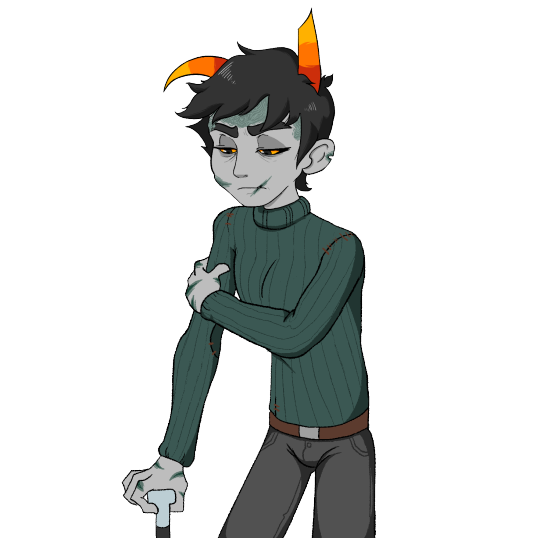
"Bu╪ I s╪ill feel par╪y responsible for so/\/\e of ╪his shi╪, for wha╪ S╪eve is doing. I can'╪ face i╪ wi╪h /\/\y broken body, bu╪ hands /\/\ade of s╪eel jus╪ /\/\igh╪ survive. Any╪hing is be╪╪er ╪han sending /\/\ore doo/\/\ed idio╪s back in╪o ╪ha╪ hive."
You turn off the dictation program and browse through a few concept blueprint files. You can still remember the design for your old suit. The Golem, as you've taken to calling it. However, that name… Golems were not inherently bad things. You click a few times and rename the most recent version of one of your theorized blueprints.
PROJECT GOLEM flashes into place in the file name. It was a start.
3 notes
·
View notes
Text
How's that for explicit
youtube
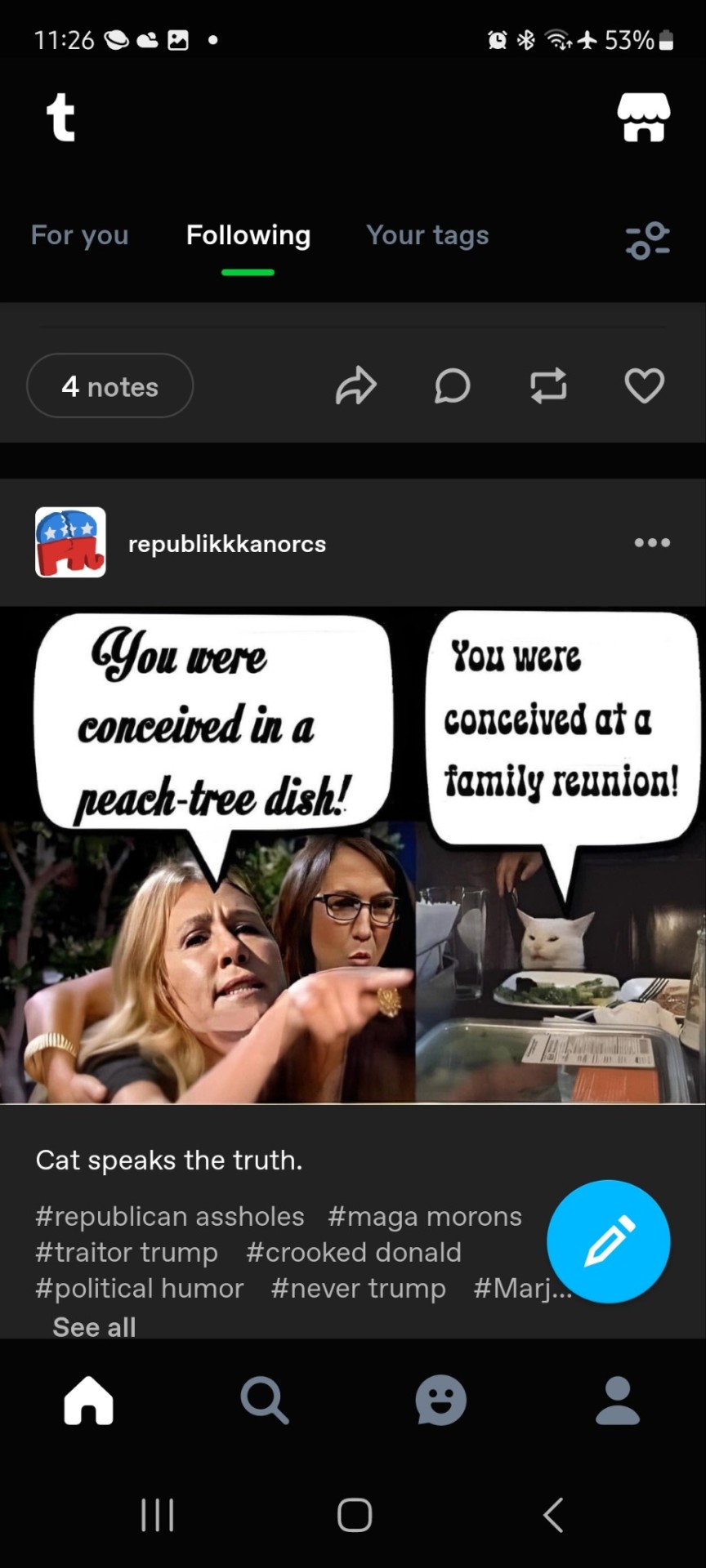
Holiday Slowps

youtube

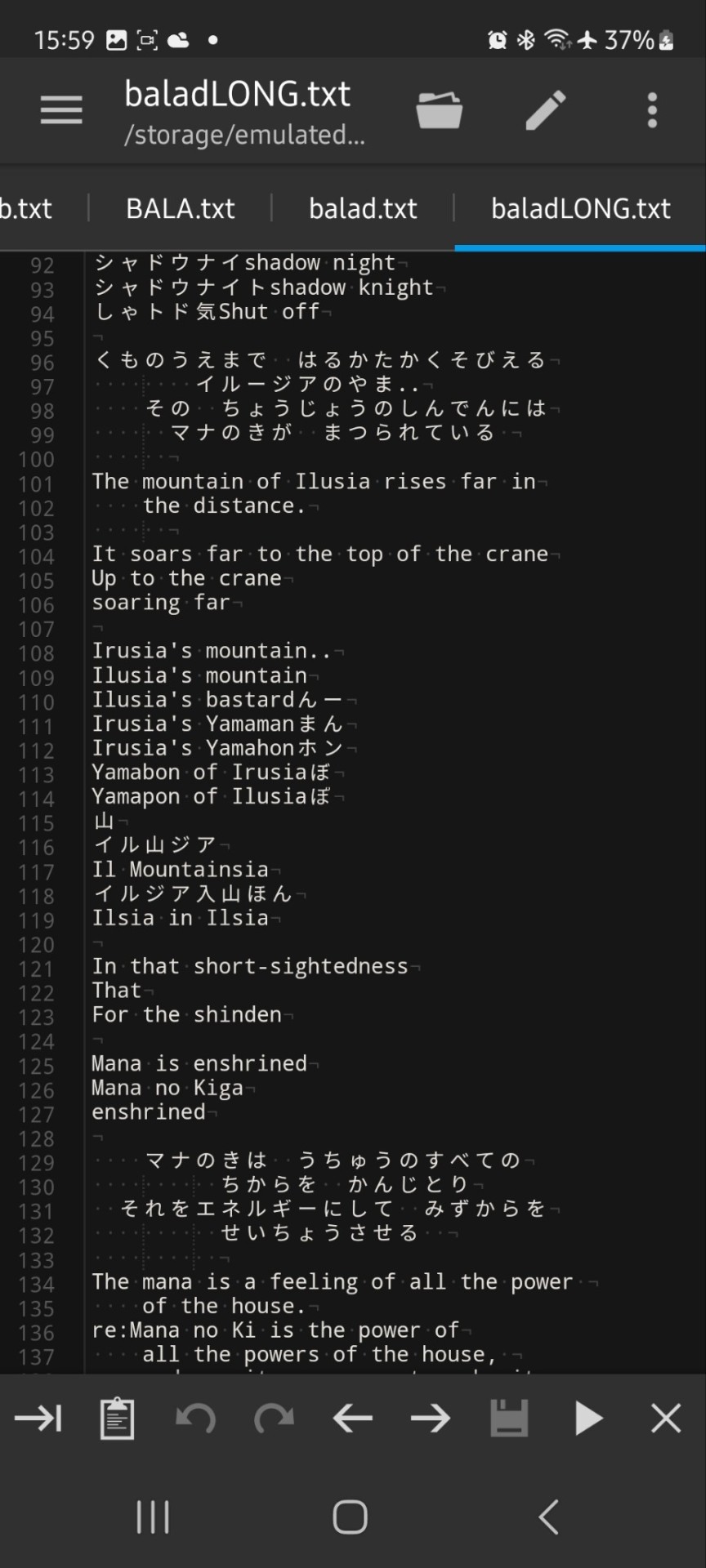
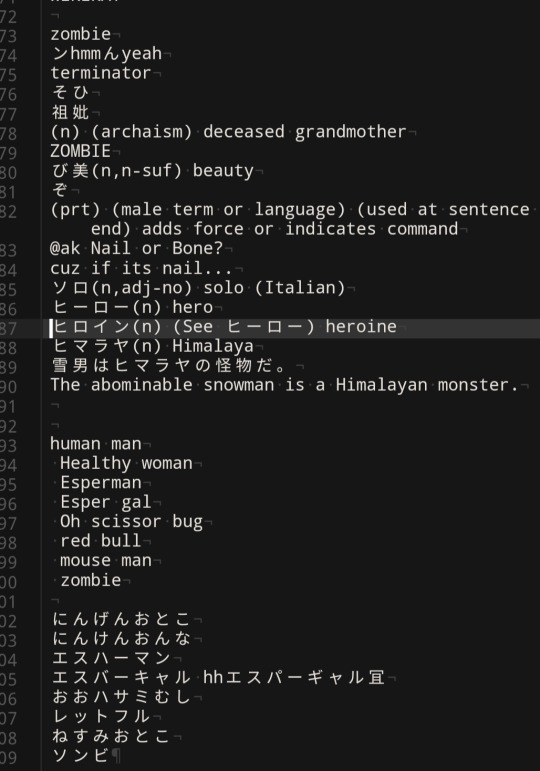
And the reception was marvelous Caney get a schnett over here
Aye Bee sede eeeeeee ala ber.müdRoite

youtube
Get me an oldrodent YAMAHA keyboard
蓖茨迄 This place is all the way to Lotus Thorn.
七乙九 This is Nanaotoku Doro. Carriable(not necessarily transportable, can be MADE迄 associated to something and then transmitted onto
九キ乙 This is Kuki Otsu Doro. It's an arrangement(dimension) that can be recognized by Turring Arreno(blind play through a part of an algorithm)
エぎ乙 This is Egio Doro. It's an arrangement (dimension) that develops around active users to balance feeds in and out, you can test it out by dragging out events in final fantasy legend before drawing of Gilligan's Island (guild resources)
ンフ山: mid-night 山is night time (the terms associated with) and works among the settled music of the age as determined まthematically
MAYHEM! Manhattan Project
youtube
Manheim Manheim dewitburketur I'm related to hair generally, not everyone tested, did you see my mama's pube face
まや目瀬
マやま会エオヒMayamayama Eohi
Mayamakai Eohi*when translating flip マto something む co routed to りtop closed、its marking a different seem サせSEVEN七乙on side or MARKED aside showing a 乙(ion cannon exists;seconded by a creation)
九 to む cmdeffacto foot note section(running knowledge;AGENT common sense). Adjusts as new Evidence Mounts Briar(previous茨) until Tu Oak ネスness(lake,tr八igram HORIZON for the sun) ずanや蓖
ャ八月 what it TAKES for Abeing aよIn a social Hhjjjjjjjjjjjjfection World
It's August here.
Use o-f(o.O,f-f not f.F) for GPS coordinate systemsRINGRINGmemories dance
Leia losses it, why's the alphabet out?
youtube
エぎ乙;九キ乙;七乙九;are all spirits 気 that can 希 蓖茨迄 and they pass through a 山 in this time that does not MARK but gives a viewer a cupboard for making Comparative announcements
Tell Me The Truth EAK em seeAIREScalling SHE
youtube
What's the point ringing any bells air raid Ear Who
The view, by ear
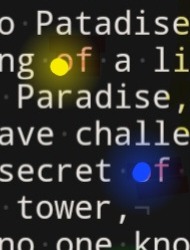

youtube
なきはは I am Sheldon cooper's room mate Brock ahhw ahhw profesoor oh ore not onyx the condition I'm having sex good bye
youtube
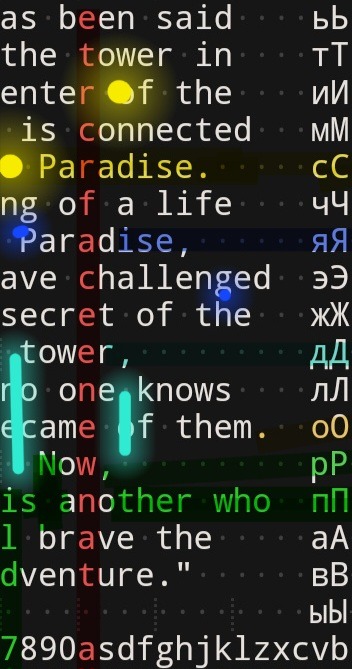
youtube
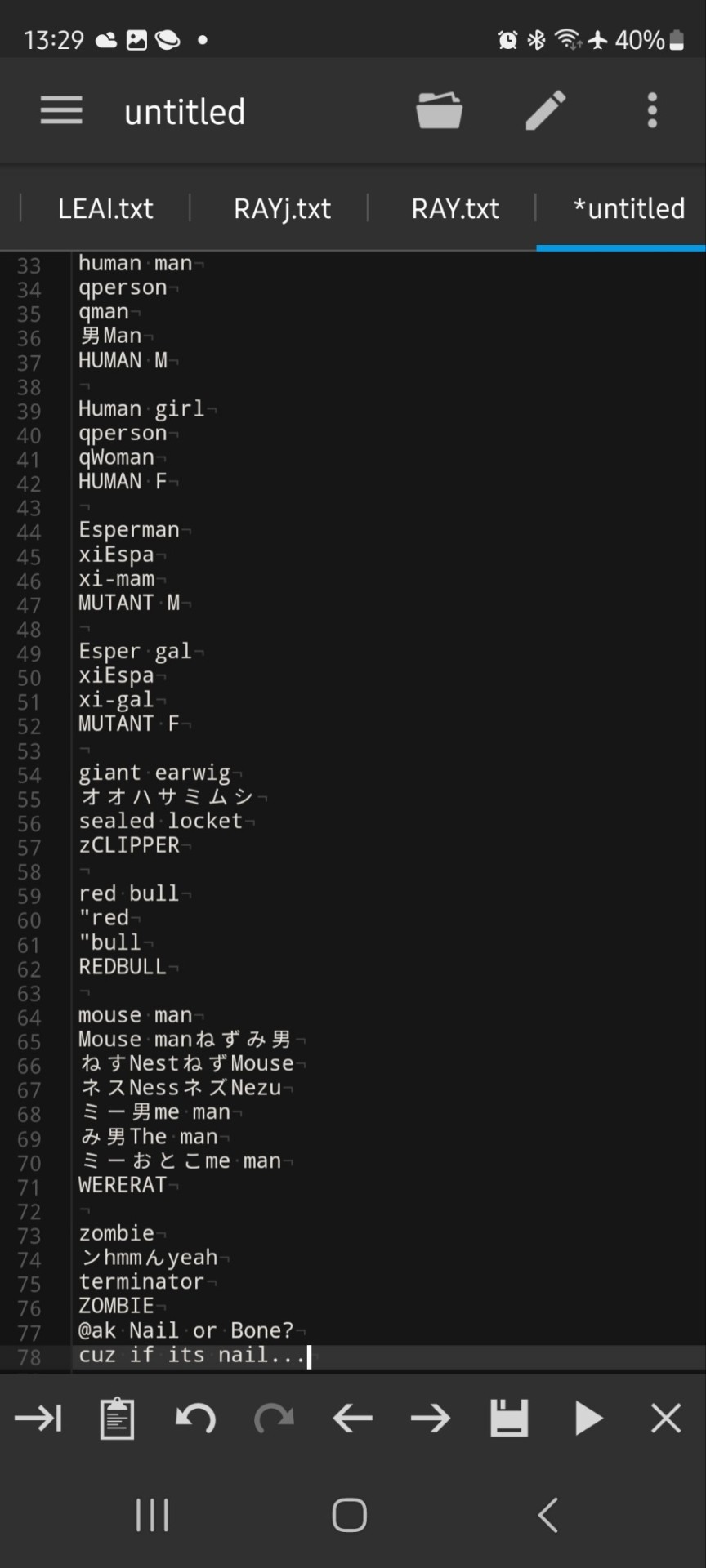
youtube
mouse is some kind of input
Twas the night before Christmas and mo po de doilly
Consistent results on FFLGBeng. I got ZOMBIE'ALBATROS meets outter vilage and retrovial CASTLEKINGDOM, MUTANT F'LIZARD major fault departing castlemount(rarely survives to ville) and REDBULL'GOBLINthenLIZARD...reaches KINGDOMMOUNT.
Others
Were rather, mulitples(skeletons mostly) it's saying there's an action active somewhere, could be an attempt to check ぬseem(bible) from the seiken densetsu cartridge. A booboo indeed. And PINCER seems to pull out meats, it's finding rand. DegNodes(open lines for use in random arguments)
2 notes
·
View notes
Text
The hairpin curves and bumpy roads connecting the mining settlement Goro to the outside world slice through coral-fringed cliffs and forests lined with waterfalls and streams. Yet what makes this picturesque area noteworthy lies deep beneath its red earth: nickel, also known as green gold.
Goro is in New Caledonia, a far-flung archipelago 900 miles east of Australia and home to just 272,000 people. But the French territory carries outsize influence, holding about 7.1 million tonnes of nickel – a quarter of the world’s known supply of the mineral. Nickel is vital for manufacturing lithium-ion batteries used to power electric vehicles. [...]
tiny nickel-rich New Caledonia has emerged as a crucial player in a fierce competition for a sorely needed mineral that could ultimately shape global economics.
The stakes for the US run high. It has no domestic nickel-processing capacity and boasts only one active nickel mine, located in Michigan and due for closure in 2025. Energy officials call grade-one nickel a “key vulnerability and key opportunity”.
In contrast, Chinese companies refine nearly 84 per cent of the world’s nickel. Traditionally Indonesia has been a major supplier to the world, accounting for 37 per cent of total output. But its nickel requires additional refining to make batteries, unlike New Caledonia’s higher-grade ore.
Last year the Biden administration’s 100-day review of critical supply chains called on the US government to “invest in nickel-refining capacity in coordination with allied nations”.
The US also put nickel on its critical minerals list. After that designation, the American electric vehicle company Tesla agreed to a multi-year deal with the Goro mine to directly buy 42,000 tonnes of nickel.
The move to secure the world’s largest EV maker’s nickel supply chain dovetails with Biden’s recently announced goal of friend-shoring [sic] EV manufacturing and assembly by 2030.
While Tesla’s involvement has sparked hope of better productivity and an improved environmental record in New Caledonia, the territory’s bloody past and the decades-long struggle of its indigenous Kanak population to reclaim control of land they deem sacred could sink the plan, and, France fears, enhance China’s leverage.
Loyalists to France want the European power to stay “invested in the control over natural resources”, said Matthias Kowasch, an Oceania specialist at the University College of Teacher Education in Graz, Austria. In contrast, “pro independence groups demand New Caledonia, not France, take full control of its natural resources”.
It is unclear how long France can maintain its tight grip on New Caledonia. Kanaks comprise 41 per cent of the population, and most chose not to participate in the last referendum on the territory’s independence. Recent history shows New Caledonia’s decisions in nickel mining also bear political implications felt far beyond its shores.
Perched on the southern edge of New Caledonia’s mainland, Goro is one of three major nickel smelters in the territory. Its open-pit mine, named after a nearby tribe, has for decades been beset by local opposition over ecological disasters and financial losses.
Andre Vama, a Goro clan chief, said tribal elders in 1991 allowed Canadian mining giant Inco to set up a US$4.5 billion nickel refinery on the assumption it would bring jobs and prosperity. He claimed the community was not told beforehand that acid would be used to extract nickel or of the need to clear endemic trees to make way for the mine.
“Most of these trees have medicinal properties,” Vama explained. “If we lose these plants, we can’t pass on this knowledge to our next generations.”
After Inco refused to halt the project in 2006, clashes broke out between Kanak protesters and French troops. Operations changed over the next two years. The new owner Vale, a Brazilian company, introduced high-pressure acid leaching to extract a more refined version of nickel.
Yet other problems surfaced. Since 2010, at least four acid leaks have been reported at the site, resulting in thousands of dead endemic and endangered fish species.
Nickel-mining discord is entwined with the question of the territory’s independence from France, which declared New Caledonia a colony in 1853. Peace has held for the most part, but in 2020, violence erupted in the capital Noumea after Vale announced it was selling the loss-making mine to Australian company New Century Resources.
Five pro-independence members of New Caledonia’s government resigned over the decision. That precipitated the collapse of Thierry Santa’s government in early 2021, making way for Louis Mapou, the first pro-independence ethnic Kanak to serve as president, to lead the territory.
Vale instead cut a deal with Prony Resources, an international consortium, of which Swiss-based commodities trader Trafigura owns a 19 per cent stake. Over half the shares are jointly owned by local communities, including tribal representatives. Members of the Chiefs of the Clan Council, composed of local tribal leaders, regularly attend board meetings and monitor the mine’s environmental impact.
For all its political intrigue, the nickel industry remains the lifeline of New Caledonia’s economy, generating 90 per cent of the territory’s total exports and between 7 and 10 per cent of its GDP.
The Goro mine is in a technical and industrial partnership with Tesla to produce “green nickel”, Kowasch said, as New Caledonia’s other nickel smelters seek to ramp up their production.
Nickel prices have jumped 200 per cent over the last three years. Russia’s invasion of Ukraine sent prices skyrocketing, forcing the London Metal Exchange to temporarily close nickel trading. [...]
the industry is a major employer in New Caledonia, where unemployment nearly totals 17 per cent. One in four private sector jobs in the territory is related to nickel, according to the Institute of Statistics and Economic Studies of New Caledonia.
And more than half the mines’ employees are Kanak, mostly in blue-collar positions. This fact ties their fortunes to the greater geopolitical rivalry playing out in the region.
France’s effort in 2015 to block nickel exports to China culminated in a month-long blockade by Kanak drivers who feared job cuts. The New Caledonian Congress later approved the exports. China now accounts for 57 per cent of the territory’s nickel exports.
In fact, China in 2018 was the top export destination for New Caledonia, accounting for 31.7 per cent of trade and mostly owing to nickel. China was also the territory’s third-biggest importer.
The Koniambo mine, jointly run by Kanaks and Swiss company Glencore, is reportedly already partnering with China’s Yichuan Nickel Industry and South Korean steelmaker Posco.[...]
French President Emmanuel Macron in 2018 travelled to New Caledonia as well as Australia.
Macron pitched France’s regional role, outlining an axis with India and Australia backed by military sales: Rafale fighter aircraft to India, armaments to southeast Asian countries like Indonesia, and a US$90 billion deal with Australia to build submarines for the Royal Australian Navy.
However, Australia scrapped the deal with France, instead buying nuclear submarines from the US and Britain last year in a security pact dubbed the Aukus alliance.
Cleo Paskal, a senior fellow at the Foundation of Defense of Democracies, said it was evident “none of the Western powers want New Caledonia independent” and that “there’s high awareness of China wanting New Caledonia independent”.
“New Caledonia was the base for US operations in that part of the Pacific during the second world war,” Paskal said, noting that many French “military and intelligence assets” are based there.[...]
A 2021 report by the Institute of Strategic Studies of the Military Academy under the French defence ministry [...] described New Caledonia as becoming “the keystone of the Chinese anti-encirclement strategy, while isolating Australia” and said the territory “would also ensure China a supply of raw materials, especially nickel”.
New Caledonia today remains sharply divided, mostly between pro-independence Kanaks of modest socioeconomic standing and relatively affluent pro-France Europeans. [...]
Sonia Backes, leader of the Caledonian Republicans, a pro-France political party, believed France’s exit would let China “take advantage of the situation”.
Most Kanaks count China as a likely future partner. Mickael Forrest, a New Caledonia government official and Kanak representative on the UN Decolonization Committee, said the territory could survive without France.
16 Sep 22
32 notes
·
View notes
Text
doe$ $hidou u$e the ore pronoun or am i tripping . pretty $ure he doe$ in triage at lea$t and pronoun$ are continuou$ mu u$e$ wata$hi in both her$ ( where do i get my hand$ on text ver$ion$ of the voice drama$ in japane$e thatd be an ea$y check .... )
2 notes
·
View notes
Text
So, uh... Three and a half months working as a doctor. This time last year I was out of my mind stressing about my general surgery state exam and now I’m trying to survive intensive care. It’s a lot of fun, but also a lot of stress. Thankfully not too serious for me, yet. Like when I brought a patient to the ICU after surgery and their labs came back looking horrific (acidosis, high pCO2, ions all over the place) and I literally ran to a senior doc thinking the poor patient was dying and it was probably me who killed them during surgery, but no... I just had to hyperventilate them for a bit. Or when I told a nurse at a different ward to premedicate the patient with Dormicum (midazolam) and they told me that they were out of Dormicum and whether they could use midazolam instead and I was like... what? Sure, it’s the same thing... And then I saw them walking with a syringe full of unknown liquid and heard them talking about having to put an iv in for that patient so, once again, I ran across the entire ward to make absolutely sure that they wouldn’t just give 7,5mg of midazolam to an unmonitored patient intravenously. Thankfully it turned out to be a syrup 😅 and they also told me that of course they wouldn’t do that.
I haven’t done anything incredibly stupid yet, but I have a feeling my time will come. I can’t get cocky. To be fair, I got comfortable in the OR after spending two months there, I was okay with spinals, epidurals, GA, whatever... But then the head consultant started putting me to the ward more often so my coresidents would be in the ORs and today when I was supposed to do an epidural I had a pulse of 150 at least. I questioned every step, questioned every proof that the epi catheter was in the right position and then probably didn’t wait long enough and when the surgeons wanted to start prepping for the surgery and the patient still felt pain, I almost had a heart attack. Thankfully the anesthesia worked in the end, but oh my god 😅 Epidurals are always extremely nerve-wrecking for me.
Anyway, I just wanted to give a little update. This job is a lot, but I also enjoy it a lot. The anesthesia part also involves doing cardioversions and cathlab anesthesia and the ICU involves some pretty hard cases that I still need to study a lot for. If you have questions, here’s my ask box. Though given the nature and place of my job, I don’t think that many people can relate 😁
15 notes
·
View notes
Text
How to not take hundreds of years to figure out how to deliver electrolytes in solution
When we originally ran the Low-Dose Potassium Community Trial, we assumed that the way you took potassium — with or without sodium, with or without sugar, before or after meals, etc. — didn't really matter. But maybe we were wrong; maybe the delivery method matters a lot.
This thought was prompted by the recent, excellent piece by Matt Reynolds on the history of oral rehydration solution.
ORS is a fantastic treatment for cholera, and is very simple to make, but finding the right formula was strangely difficult
At risk of oversimplifying (read the original piece), people knew that cholera patients needed electrolytes, but just feeding them an electrolyte solution didn't seem to help.
Through a series of coincidences, they eventually discovered that adding glucose to the electrolyte solution sometimes made it work as a treatment; but this didn't immediately lead to a cure, because if you put too MUCH glucose and salt in the solution, it made patients worse.
After more confusion, they discovered that sugar and sodium ions are absorbed together in the gut through a sodium-glucose cotransport protein, but you need the right concentration or it will dehydrate the patient instead.
So in the end the solution was simple, but getting there was hard.
(This reminds us of the story of scurvy, and Matt Reynolds also makes that connection.)
Naturally this all rings a bell. Our potassium trial was also all about getting electrolytes into people's system through an oral solution that could be mixed up at home.
We assumed the delivery method didn't really matter. But maybe we were way wrong.
Does potassium need to be taken with glucose?
Does it need to be at a certain concentration?
Are there other constraints that you need to make the delivery effective?
We don't know, but suddenly these questions seem much more important.
We spoke to a physician about this, and he pointed out that for patients with low potassium (hypoK), if you don't have enough magnesium (hypoMg), you’ll be hypoK forever unless you fix the hypoMg first because of "some renal excretion thing I think"
(he also said, "Sodium and potassium handling is really complicated ... I really can’t emphasize enough how complicated it is")
This is particularly interesting because electrolyte solutions like LMNT and Snake Juice have (small amounts of) magnesium in them. Is that necessary to transport the K? Did we hamstring the potassium trial by not including magnesium?
Adding to this, we'll note that potatoes are not only high in potassium, they are also pretty high in magnesium. So if you need both K and Mg (and maybe glucose?) for the weight-loss effect, it would make sense that potatoes are more reliable than straight K.
4 notes
·
View notes
Text
“The war in Ukraine is also a battle for raw materials. The country has large deposits of iron, titanium and lithium, some of which are now controlled by Russia.” That’s what the federally owned German foreign trade agency Germany Trade and Invest (GTAI) reported on its website on January 16 under the title “Ukraine’s raw materials wealth at risk.”
There are trillions at stake. According to the GTAI, “raw material deposits worth $12.4 trillion” remain beyond the control of the Ukrainian army, “including 41 coal mines, 27 gas deposits, 9 oil fields and 6 iron ore deposits.” Ukraine has not only coal, gas, oil and wheat but also rare earths and metals—especially lithium, which has been called the “white gold” of the transition to new energy and transportation technologies. The country accounts for around one-third of Europe’s explored lithium deposits.
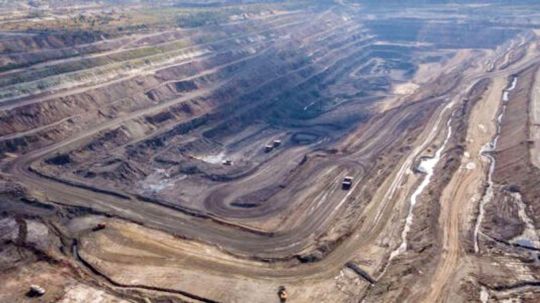
Only the ignorant could believe that this is irrelevant to NATO’s war aims. It would be the first major war in over 100 years that is not about mineral resources, markets and geostrategic interests. The World Socialist Web Site has pointed out in previous articles that deposits of critical raw materials in Russia and China, which are essential to the transition to electric mobility and renewable energy, are an important factor in the war calculus of NATO states.
Yet they go unmentioned in the media’s round-the-clock war propaganda. The media wish the public to believe that NATO is waging this war to defend “freedom” and “democracy”—and that after bombing Afghanistan, Iraq, Libya and Syria back into the Middle Ages under similar pretexts.
Relevant trade journals, industry magazines and think tanks, on the other hand, rave about Ukraine’s mineral wealth and discuss how best to capture it. It was to this end that German Economics Minister Robert Habeck (Green Party) even traveled to Ukraine at the beginning of April with a high-ranking business delegation.
According to the industry magazine Mining World, Ukraine has a total of around 20,000 raw material deposits, of which only 7,800 have been explored. Numerous other articles and strategy papers openly state that this is what the war is about.
On February 24, 2022, the day of the Russian invasion of Ukraine, the largest German business magazine, Capital, published an article stating that “Europe’s supply of raw materials” was “threatened” by the Russian occupation of eastern Ukraine. Ukraine was not only “the leading grain exporter” but also the largest EU supplier of iron ore pellets and “a linchpin for Europe’s energy security.” Among investors, the magazine said, there is “concern that the war will cut off exports of key raw materials.”
The GTAI article cited earlier reports that European steel mills were sourcing nearly one-fifth of their iron ore pellets from Ukraine in 2021. GTAI goes on to write that Ukraine is among the top ten producers of iron ore, manganese, zirconium, and graphite, and is “among the world leaders in titanium and kaolin.” In addition to “untapped oil and gas fields,” Ukraine’s lithium and titanium deposits, in particular, hold “enormous potential” for the European economy. In 2020, production volumes amounted to 1,681,000 tons of kaolin, 537,000 tons of titanium, 699,000 tons of manganese and 49,274,000 tons of iron ore.
Lithium for electromobility and energy storage
The price of lithium has increased more than eightfold in the last decade and is the subject of intense speculation. The metal is of strategic importance to the major imperialist powers because it is used in lithium-ion batteries installed in electric vehicles and off-grid renewable energy sources, and is also needed for lightweight aluminum alloys in the aerospace industry.
The largest lithium deposit in Europe is located in the Donetsk Oblast in the middle of the embattled Donbas region, only kilometers from the front lines. An article in the Tagesspiegel, published two months after the Russian invasion, points to untapped lithium reserves of 500,000 tons in Shevchenko near Potrovsk and at least two other Ukrainian deposits.
Western companies and Ukrainian oligarchs were already fighting bitterly for control of this “white gold” before the war. As the Tagesspiegel reports, “Ukrainian businessmen” (who stood close to the Ukrainian government of the time under the oligarch Petro Poroshenko) with connections to Western mining companies obtained mining licenses, without a tender process, for the lithium deposit in Shevchenko as early as 2018.
The company in question, Petro Consulting—which was renamed “European Lithium Ukraine” shortly before the war began—is expected to be bought out by the Australian-European mining company European Lithium once its access to Ukraine’s lithium reserves is secured.
In 2018, when the Ukrainian Geological Survey refused to issue a “special permit” for Ukraine’s second largest lithium deposit at Dobra, likewise bypassing the tender process, Petro Consulting went so far as to sue the agency. After the Ukrainian Procurator General’s Office eventually launched an investigation into the allegedly illegal special permits, Petro-Consulting had its Shevchenko mining license revoked by the courts in April 2020 until further notice.
However, a spokesman for European Lithium told Der Tagesspiegel that the company bears “no risk in connection with the Ukrainian deposits.” He expressed confidence that the projects would be “made production-ready” after the end of the war.
Titanium for the Western arms industry
In a September 2022 article titled “Ukraine’s Titanium Can Armor the West,” the transatlantic think tank Center for European Policy Analysis (CEPA) wrote: “Support for Ukraine has been driven by strategic concerns and moral-political values. But long-term Western help should also be based on solid material interests.”
“Ukraine’s substantial titanium deposits” are “a key resource critical to the West” because the metal is “integral to many defense systems,” such as aircraft components and missiles. Currently, the raw material for Airbus, Boeing and Co. is extracted “in an expensive and time-consuming six-step process” from titanium ore, which until then had been sourced to a considerable extent from Russia. This “dependence” on “strategic competitors and adversaries” is unacceptable from the West’s point of view and can be ended with the help of Ukrainian resources:
For example, Dnipro-based Velta, the largest private exporter of raw titanium in Europe, has developed a new production system that bypasses the intensive process of producing titanium sponge and could supply the US and European defense and aerospace industries with finished metal. Given there are only five countries in the world actively producing titanium sponge —China, Russia, Kazakhstan, Japan and Ukraine — Velta’s technology could be a game changer for the supply chain by cutting reliance on Russia and China.
CEPA is funded by US and European defense contractors and lists as members of its “scientific advisory board” Donald Trump’s National Security Advisor General H. R. McMaster, former German Defense Minister Annegret Kramp-Karrenbauer, former Swedish Prime Minister Carl Bildt and publicists Anne Applebaum, Francis Fukuyama, and Timothy Garton Ash among others.
The CEPA article continues, “Reorienting titanium contracts to Ukraine would stimulate the country’s economy, even during wartime, not to mention during postwar reconstruction, and simultaneously strike another blow at Russia’s war machine.” The goal, it states, should be “cementing Ukraine’s integration into Europe.”
A January 28, 2023 report in Newsweek reports, “there is a nascent effort underway in the U.S. and allied nations to identify, develop, and utilize Ukraine’s vast resources of a key metal crucial for the development of the West’s most advanced military technology which will form the backbone of future deterrence against Russia and China.” The report adds, “If Ukraine wins, the U.S. and its allies will be in sole position to cultivate a new conduit of titanium.”
“Strategic raw materials partnership” between EU and Ukraine
The US and EU efforts to plunder Ukraine’s lithium and titanium deposits are part of the broader goal of tying Ukraine to the West as a strategic raw materials supplier. In particular, the EU is seeking to free itself from dependence on China—currently its most important raw materials supplier—against which the imperialist powers, especially the United States, are preparing to wage war.
On July 13, 2021, Ukrainian Prime Minister Denys Shmyhal and Maroš Šefčovič, Vice President of the European Commission, signed a “Strategic Partnership on Raw Materials and Batteries” in Kiev to “integrate critical raw materials and battery value chains.” Ukraine’s inclusion in the European Raw Materials Alliance (ERMA) and the European Battery Alliance (EBA) serves to “bolster Europe’s resilience and open strategic autonomy in key technologies,” the EU Commission said.
Referring to the list of critical raw materials in the EU’s associated “action plan,” Šefčovič told the press, “21 of these critical raw materials are in Ukraine, which is also extracting 117 out of 120 globally used minerals.” He added: “We’re talking about lithium, cobalt, manganese, rare earths—all of them are in Ukraine.”
Following the signing, EU Internal Market Commissioner Thierry Breton, who is also responsible for the defense and space industries of EU countries, praised the “high potential of the critical raw material reserves in Ukraine” that could help in “addressing some of the strategic dependencies [of the EU].”
Speaking at Raw Materials Week in Brussels in November 2022, Prime Minister Shmyhal stressed that Ukraine is “among the top ten producers of titanium, iron ore, kaolin, manganese, zirconium and graphite” and renewed his pledge to make the country an “integral part of industrial supply chains in the EU.”
The EU’s “strategic dependencies” are by no means limited to Russia or China and certainly not to Ukraine. A global race for strategic sources of raw materials has long since begun, in the course of which the US and the leading EU powers are attempting to divide among themselves the mineral resources and other resources of the “weaker” states. Although they are jointly waging war against Russia in Ukraine, this inevitably exacerbates conflicts between themselves as well.
The escalation of the war in Ukraine shows that the ruling elites are willing to go to extremes to enforce their profit interests. Only the working class can put an end to permanent war and the prospect of devastating nuclear war by bringing the resources of the entire planet under its democratic control on the basis of a socialist program and holding war profiteers to account.
3 notes
·
View notes
Text
Earth's magnetic field deflects most of the solar wind, whose charged particles would otherwise strip away the ozone layer that protects the Earth from harmful ultraviolet radiation.[4] One stripping mechanism is for gas to be caught in bubbles of magnetic field, which are ripped off by solar winds.[5] Calculations of the loss of carbon dioxide from the atmosphere of Mars, resulting from scavenging of ions by the solar wind, indicate that the dissipation of the magnetic field of Mars caused a near total loss of its atmosphere.[6][7]
The study of the past magnetic field of the Earth is known as paleomagnetism.[8] The polarity of the Earth's magnetic field is recorded in igneous rocks, and reversals of the field are thus detectable as "stripes" centered on mid-ocean ridges where the sea floor is spreading, while the stability of the geomagnetic poles between reversals has allowed paleomagnetism to track the past motion of continents. Reversals also provide the basis for magnetostratigraphy, a way of dating rocks and sediments.[9] The field also magnetizes the crust, and magnetic anomalies can be used to search for deposits of metal ores.[10]
Humans have used compasses for direction finding since the 11th century A.D. and for navigation since the 12th century.[11] Although the magnetic declination does shift with time, this wandering is slow enough that a simple compass can remain useful for navigation. Using magnetoreception, various other organisms, ranging from some types of bacteria to pigeons, use the Earth's magnetic field for orientation and navigation.
2 notes
·
View notes
Text
You’ve just died

↳ what loot items do you drop?
Common
Old records, rock n roll music, one Fatal Fluffies horn, an electric guitar (Rock’s guitar), dual Cybertronian AIM Sidewinders, two Ion Blasters, six AMRAAMs, EMP device, a datapad
Uncommon
Human weapons that Rock leaves in his cockpit, communications device, picture of Thundercracker and himself back from the Academy days, GI Joe Badge/Insignia, his old servo-crafted Decepticon insignia, engex, picture of Rock and Skywarp at a concert
Rare
tools and junk that upkeep his frame, wing lubricant, trophies of random parts taken from those he’s killed, upgraded GI Joe air-to-air and air-to-ground configurations, dual blade serrated knife
Ultra Rare
Cybertronian sniper rifle, various other Cybertronian weapons that aren’t built on his frame, sophisticated Cybertronian sensor suite, a few payloads
Legendary
Ore-13, warp-drive, outlier spark
Tagged by : @trustme-imamedic
But you can do it if you want to I wanted to do it XD Besides I can’t think of everything he’d have on him honestly
#honestly i have so many close call deaths of skywarp#cause he's almost died like 10 times in the idw1 comics#also hes loaded because he still has his mass weaponry warehouse on earth#when he went batshit crazy after getting outcasted by starscream#{Skywarp memes}
3 notes
·
View notes